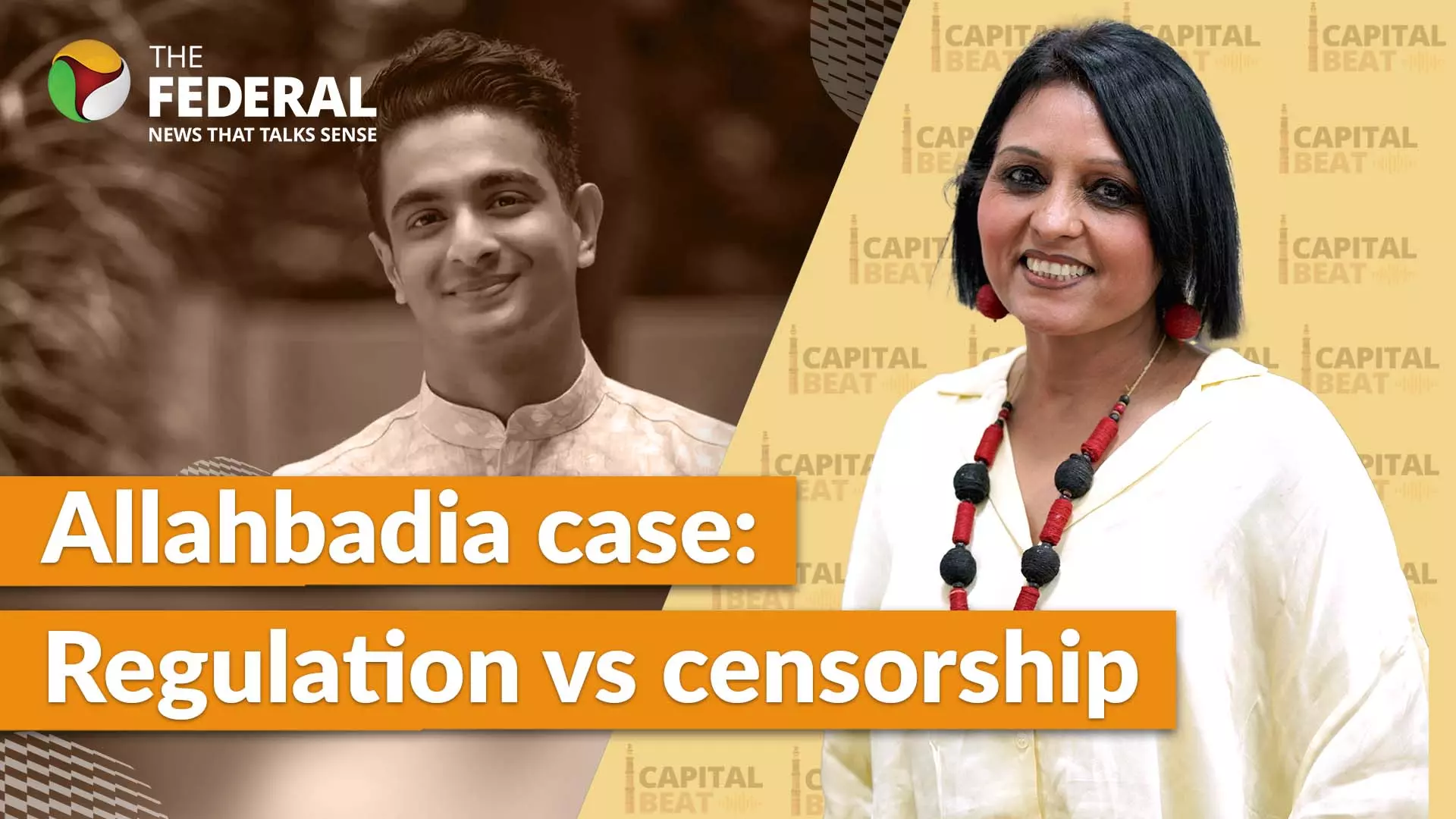
Allahbadia case: SC moots norms rather than censorship; will this work?
In the Ranveer Allahbadia case, SC has sought regulation for online content; The Federal speaks to SC lawyer Sanjay Hegde on this

The Supreme Court has asked the Centre to formulate content guidelines for social media platforms, sparking concerns over potential censorship. In this episode of Capital Beat, veteran lawyer and constitutional expert Sanjay Hegde joined the discussion to analyse the implications of this directive, especially in the context of YouTuber Ranveer Allahbadia’s case.
Allahbadia, who had been temporarily barred from uploading his podcasts, was allowed to resume his content by the Supreme Court. However, the court also stressed the need for regulatory measures while ensuring that they do not infringe on free speech. This has fuelled debates about whether this move could be a gateway for tighter governmental control over digital platforms.
Supreme Court’s stance on social media regulation
The Supreme Court’s call for content guidelines emerged from Allahbadia's case, which involved controversial remarks made by him on the YouTube show India’s Got Latent. The court questioned whether online content should adhere to moral and ethical standards, particularly to prevent impressionable youth from exposure to inappropriate material.
“There should be a limited regulatory measure, but it must not lead to censorship,” the bench of Justices Surya Kant and N Kotiswar Singh observed. The court also extended interim protection from arrest for Allahbadia but asked him to cooperate with the ongoing investigations.
Hegde pointed out that while the Supreme Court’s intentions may be well-placed, the move could inadvertently provide an opportunity for the government to tighten its grip on digital media.
Also read: SC allows Ranveer Allahbadia to resume his show
Government’s role in setting content norms
The Centre has now been tasked with drafting regulations that define obscenity and vulgarity online. While the government has been eager to impose stricter controls, the court has insisted that all stakeholders be consulted before finalizing any regulations.
Hegde highlighted the potential for government overreach, stating, “The government has been waiting for an excuse to tighten norms on social media. Whether they use the Supreme Court’s shoulders to fire their guns remains to be seen.”
Despite this, he also noted that the Supreme Court would not hastily approve any government draft without careful scrutiny, allowing ample room for public debate and legal challenges.
Censorship fears and free speech concerns
One of the biggest worries emerging from this development is whether the government will use content regulations to suppress dissent. Critics fear that under the guise of controlling vulgarity and obscenity, the government may target independent voices and opposition platforms.
“The worry is that in the name of regulating obscenity, the government may take 10 steps further and clamp down on alternative media,” Hegde warned. He also pointed out that many platforms critical of the government’s policies could face indirect repercussions, such as demonetization or restrictions on content visibility.
Also read: Allahbadia told cops he made a 'mistake' with controversial remarks: Officials
Can regulations effectively control digital content?
Hegde raised a fundamental challenge: the nature of the internet itself. Unlike television, where broadcasting is regulated within national boundaries, digital content is global. Many content creators could relocate abroad or use VPNs to bypass Indian regulations, making enforcement difficult.
Additionally, he pointed out the failure of heavily censored regimes: “Are we North Korea? Are we going to create walled gardens for the internet? Even if we do, technology will find ways to bypass it.”
Potential impact on YouTubers and journalists
Journalists and content creators are particularly worried about how vague regulations may impact their work. If regulations dictate what language is deemed ‘obscene’ or ‘offensive,’ it could lead to selective enforcement against critics of the government.
Hegde emphasized that self-censorship could be the biggest unintended consequence: “If people start moderating their words out of fear, then the government has already won.”
One of the possible regulatory approaches could involve placing economic restrictions, such as demonetization of controversial content, imposing fines, or making platforms liable for not removing flagged content.
Also read: India's Got Latent controversy: Maharashtra Cyber cops grill Ranveer Allahbadia for 5 hours
What’s next for social media regulations?
The government has yet to present a draft, and the Supreme Court has made it clear that any proposal will be subject to public scrutiny. However, history has shown that such regulations tend to tighten around election cycles, raising concerns about timing and political motivations.
Hegde recalled how past governments attempted similar control measures, such as the controversial Postal Bill under Rajiv Gandhi, which was ultimately scrapped due to public protests.
He speculated that the government might introduce regulations closer to elections, strategically shaping the digital narrative.
A fine line between regulation and control
While regulating social media to curb obscenity and misinformation may seem necessary, it also opens the door to political misuse. The challenge lies in ensuring free speech while maintaining ethical content standards.
As the government prepares its draft guidelines, the real test will be whether the regulations are genuinely for public good or a means to stifle criticism. The Supreme Court’s decision will be crucial in determining the future of digital freedom in India.
The content above has been generated using a fine-tuned AI model. To ensure accuracy, quality, and editorial integrity, we employ a Human-In-The-Loop (HITL) process. While AI assists in creating the initial draft, our experienced editorial team carefully reviews, edits, and refines the content before publication. At The Federal, we combine the efficiency of AI with the expertise of human editors to deliver reliable and insightful journalism.

